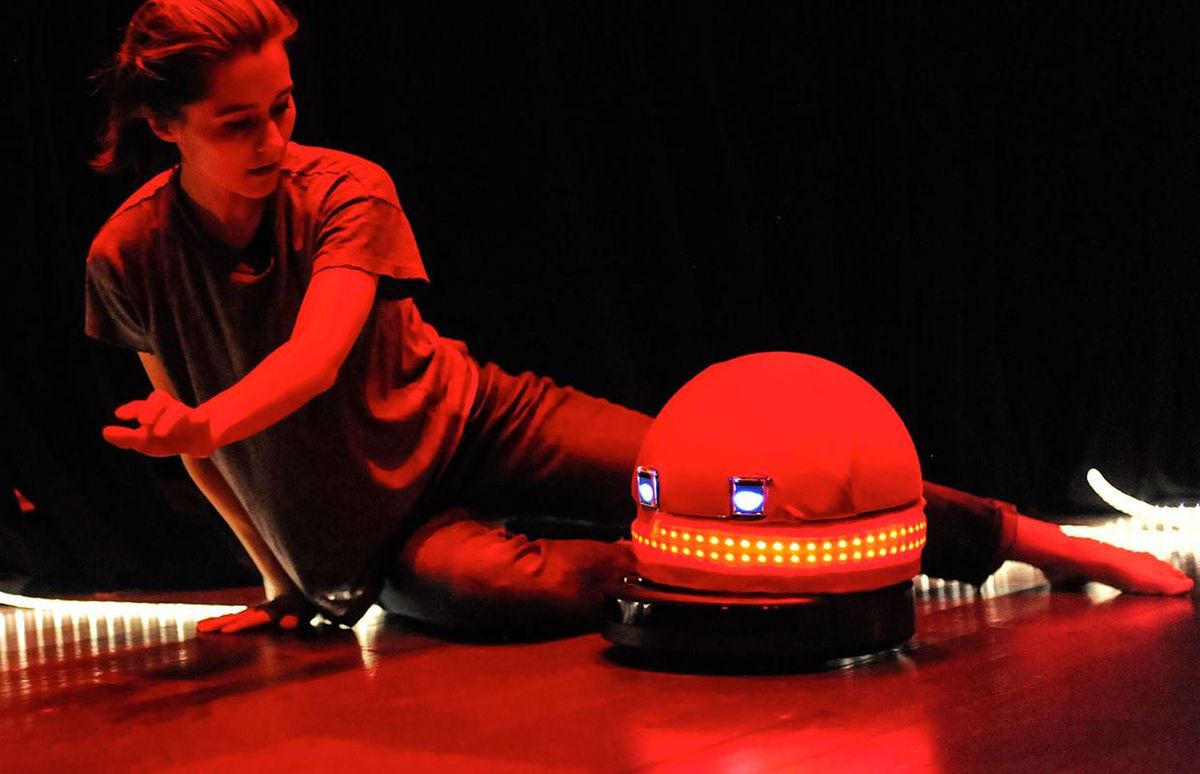THE INSTITUTEIEEE Member Amy LaViers did not always think she would be able to combine her passion for dance with math and science into a fulfilling career.
When researching which university to attend as an undergraduate, LaViers looked for ones that offered both dance and engineering programs. She found such offerings at Princeton, where in 2009 she earned a bachelor’s degree in mechanical engineering as well as a certificate in dance from the university’s Lewis Center for the Arts.
She started dancing when she was a youngster growing up in Kentucky and Tennessee. While attending high school at Jefferson County High School in Dandridge, Tenn., she danced with the Tennessee Children’s Dance Ensemble, in Knoxville.
“I couldn’t imagine [giving up dance] while going to college, but I knew I also liked math and science,” LaViers says. It wasn’t until she started planning the topic for her senior thesis, though, that she merged her interests together. She completed a year-long study using machine learning to analyze different dance styles.
Today LaViers is director of the Robotics, Automation, and Dance Lab (RAD) at the University of Illinois at Urbana-Champaign, where she is an assistant professor. She and her students, both engineers and dancers, are working to build robots that help people with everyday tasks such as taking their medication.
She recently received funding from the U.S. Defense Advanced Research Projects Agency to work on expressive interfaces for teleoperation. She will be working on PackBots, small robots the military uses for dangerous missions such as locating and defusing bombs. The robots operate from a mobile base on treads, with an articulated arm on top. She is trying to make it easier for the robots’ operators to quickly impart complex motion commands.
DISCOVERING HER PATH
Her thesis was inspired by two classes: dynamics and control and a dance writing seminar, in which she learned to describe choreography and how it has changed over time.
LaViers’ dynamics and control class was a challenge for her because she could not gauge how the elements within the course fit together. On the final day of class, however, her professor presented two types of bicycles as examples of control systems and how riders create movement while pedaling. When a rider twists the handlebars on one type of bicycle, the front wheel turns. On another model, the rider can twist the handlebars to make the back wheel turn. She learned that the design of the second bike makes it difficult to balance while riding it. The examples helped her understand the materials she had been studying.
Later that day in her writing seminar, she watched a video of choreographer Twyla Tharp. In it, Tharp spoke about how in ballet, the dancer’s starting position is difficult to maintain because she is standing with her heels together and toes facing equally out to either side. Moving on to the next position is easier because the dancer doesn’t have to shift her weight to pick up her foot. In modern dance, the starting position is more stable because the dancer is balancing on the soles of her feet, but moving to the next position requires a significant weight shift.
LaViers began to understand how stability and control in engineering and dance overlapped.
“It was then that I started to think about the tools I was taught in my mechanical engineering courses as ways to analyze and understand the style of movement Twyla Tharp spoke about—from the lens of both an engineer and a dancer,” LaViers says.
USING ART TO IMPROVE ENGINEERING
RAD Lab researchers are working to understand how humans move and behave in certain environments, so they can learn how to build robots that maneuver in surroundings filled with people. The group uses tools from dynamics and control as well as choreography and embodied movement practice, or the practice of expression through movement, when working with PackBots and similar machines.
During a site-visit conversation, LaViers discovered soldiers worry about inadvertently triggering a bomb with their PackBots during teleoperation. In the process, the robot could get damaged while the operator is maneuvering it away from the bomb—which could leave the risky job of defusing the explosive to a human.
The robot has several preprogrammed poses or coordinated movements, like picking up an object. But they are limiting. The soldiers use a pad controller to choose which pose they want the robot to perform.
LaViers’ job is to increase the robot’s coordination by understanding how humans, like dancers, share complex movement instructions with one another. She and her team of engineers and choreographers at the RAD Lab are creating software to translate the movements.
STEAM EDUCATION
When asked about the importance of an education that combines art with science, technology, engineering, and math, LaViers says science and art are “arbitrary distinctions that we use to divide up the world and the activities in it.”
“There are artists who build robots, which can be viewed as a type of sculpture,” she says. “They are using mechanical engineering to put their work together even though they may not be trained mechanical engineers. There are also mechanical engineers, or product designers, who are artists and make choices about design, texture, and weight, whether or not they are trained as artists.”
